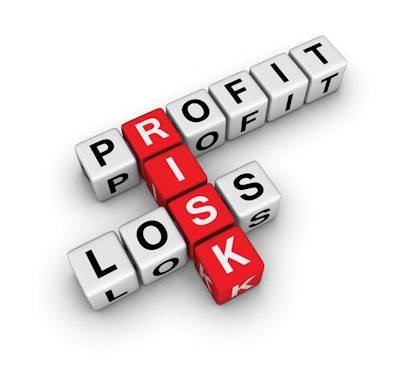
Climate change-related costs will result in a $23.7 billion decrease in EBIT (earnings before interest and taxes) for the 40 largest livestock companies by 2030, pushing half of these companies into net operating losses, according to the FAIRR (Farm Animal Investment Risk and Returns) Initiative’s Climate Risk Tool.
“These figures highlight the urgent need for meat companies to adapt swiftly or pay the financial price with investors increasingly not willing to bear the financial risk of investing in these companies,” said Jeremy Coller, Chair and Founder of the FAIRR Initiative, and Chief Investment Officer of Coller Capital.
The Climate Risk Tool provides potential investors with company-level data on how climate risks impact costs and profitability in the poultry, meat and dairy sectors. The tool assumes that temperatures will rise 2° C globally, with limited climate mitigation efforts and moderate impacts on agricultural production.
The FAIRR Initiative “is a collaborative investor network that raises awareness of environmental, social and governance (ESG) risks and opportunities brought about by intensive livestock production, according to their website.
How climate affects livestock industry profits
Overall, the tool predicts that the 40 largest livestock companies will face a 7% profit reduction in 2030 on average compared to 2030 levels, totaling $23.7 billion overall.
These profit reductions mean that half of the companies will operate at a loss. More specifically, the tool predicted overall net losses for Tyson Foods (0.9%), Cal-Maine (13.1%) and JBS (0.3%).
According to the WATTPoultry.com Top Companies Database, JBS is the world’s largest protein supplier and the second largest food company, Tyson Foods is the largest poultry producer in the U.S. and Cal-Maine is the largest egg producer in the U.S.
North American livestock companies are expected to be the hardest hit, seeing profit margins fall by an average of 11%.
Higher feed prices and expected carbon taxes on livestock emissions will drive most of the increased climate costs for livestock in 2030. Livestock companies need to improve their climate mitigation and adaptation strategies to maintain profits, FAIRR reported.
“As investors start to factor climate risk into their long-term valuations of livestock companies, the allure of investing in meat and dairy could be approaching an expiration date unless companies take action to address climate risk,” Coller said.
















